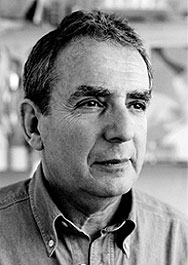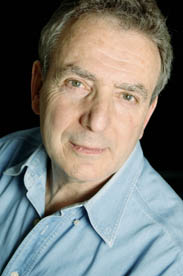NOTES: Sculpture / Glassblower, born brother of actor and writer George Layton. Son of Freddy and Edith Layton. Born Prague Czech Republic. Family name originally Loey.
http://www.londonglassblowing.co.uk/
http://www.peterlaytonglass.co.uk/
Biographies from elsewhere:
Both – Born in Prague and brought up in England, Peter Layton studied ceramics at the Central School of Art and Design in London under some of the foremost potters of the day. He chanced upon glassblowing while teaching ceramics at the University of Iowa and since returning to Britain has been continuously at the forefront in promoting this magical and versatile medium.
Peter established London Glassblowing in 1976 and subsequently formed Peter Layton and Associates Limited in response to a desire to work on a more ambitious scale. Together with Simon Moss, Peter has produced a number of large-scale stainless steel and glass sculptures, commissioned for architectural settings.
Peter Layton
As a child, Peter went to school in Bradford, where his aptitude as an artist was first recognised and which led to him becoming friends with David Hockney. ‘I got to know David quite well and even ended up going on holiday with him,’ says Layton. ‘People laugh when I say, “I went camping with David Hockney”, but in those days I don’t think I even knew what being gay meant.’
Art was not a viable way to make a living in Bradford, so Layton found himself working in the textile business. He was then called up to do his national service during which time he resolved to pursue his love his art as soon as he got home. He applied to Bradford Art College and then went to London’s Central School of Art and Design to specialise in ceramics and where he was taught by several of the most respected ceramicists of the day. Peter was then offered a temporary teaching job in Iowa University’s ceramics department. By chance, Harvey Littleton and a few colleagues were pioneering a revolutionary hot glass technique at the same time. In 1962 Peter attended one of their first experimental workshops and became bewitched by the medium’s immediacy and spontaneity.
Glass is extraordinarily seductive
‘Glass is extraordinarily seductive,’ explains Peter. ‘Every piece is an adventure and you never know exactly what you have created until you open the kiln and see how a piece has turned out. I love that moment of surprise.’ Ever since Peter returned to Britain, he has been continuously at the forefront of promoting glassblowing as an art. In 1969 he helped Sam Herman build the first furnace at the Glasshouse in Covent Garden and he subsequently established his own small glass studio at Morar in the Highlands of Scotland, a Glass Department at Hornsey College of Art (Middlesex University) and, in 1976, the London Glassblowing Workshop in an old towage works on the Thames at Rotherhithe. In 2009 Peter’s London Glassblowing Studio and Gallery moved to much larger premises in Bermondsey.
Along the way, Peter has written several books, received an honorary Doctorate of Letters from the University of Bradford, become an Honorary Liveryman of the Worshipful Company of Glass Sellers and also been given the Freedom of the City of London.
Some glassmakers create technically brilliant pieces and follow a precise pattern, others prefer to create more abstract works of art that are looser and evolve during the creative process. Layton’s work falls firmly into the latter category and he is known for his strong use of colour, the use of organic forms and the sculptural quality of his larger pieces.
Peter is inspired by whatever is around him. For example, the heavy snow of last winter turned his long commute by train into an intriguing black and white world in which texture was particularly important – all factors that shaped a new Glacier range. He regularly creates conceptual pieces which reflect his specific concerns over issues such as ecology and religion.
Everyone from Elton John to the Duchess of Kent have bought my work.
Peter has three children, Bart a film maker, by his first wife Tessa Schneideman, and Sophie a printmaker and Ben who is still at university, with his second wife Ann. Peter’s brother, George Layton, the well-known actor, is one of the many serious collectors of Peter’s work. ‘My pieces appeal to a wide audience and everyone from Elton John to the Duchess of Kent have bought my work. It is designed to be lived with and enjoyed as the light changes, not just viewed in a museum.’
At the age of 75, Layton says, ‘I have so much that I still want to do. You can never create the perfect piece of glass and there are always new ideas, techniques and other challenges to master. Glass is such an underrated medium – there is a fluidity and uncertainty which I choose to embrace rather than overcome.’
Source: http://www.londonglassblowing.co.uk/index.php?option=com_content&view=article&id=308&Itemid=4




